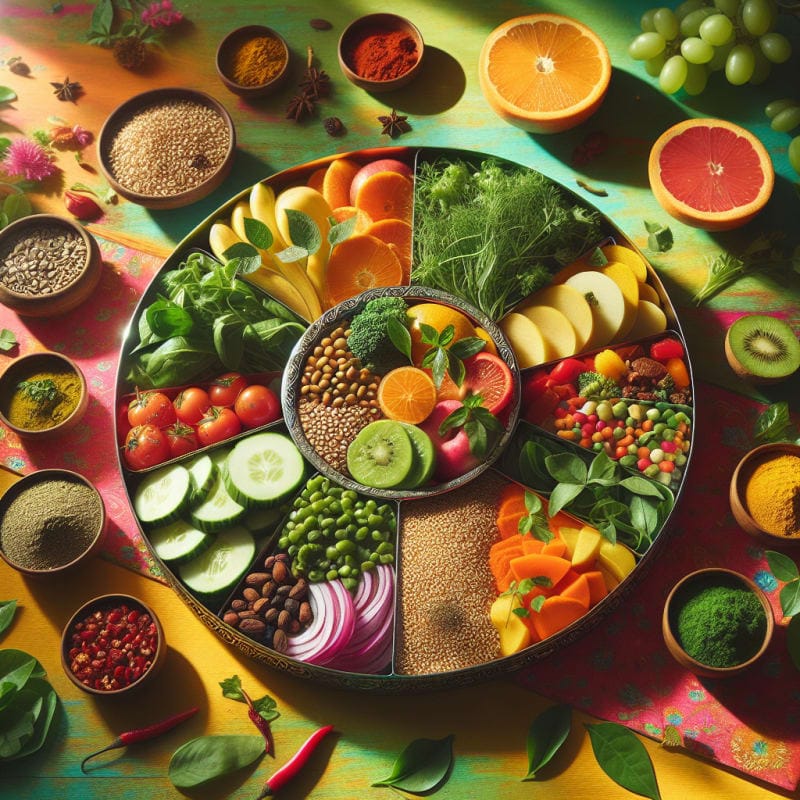Is India’s Thali Driving Diabetes and Obesity? What an Ideal Indian Plate Should Be
Are traditional Indian meals fueling the nation’s diabetes and obesity crisis? With India facing a surge in lifestyle diseases, experts are scrutinizing the classic thali—and reimagining what a truly healthy Indian plate should look like. This article breaks down the science, latest news, and practical steps to make every meal a smarter choice.
Understanding the Indian Thali: Tradition Meets Modern Health Concerns
The Indian thali—a platter featuring rice or roti, dal, vegetables, pickles, and sweets—symbolizes culinary diversity and balance. Yet, as India Today reports, the traditional thali may be contributing to rising rates of type 2 diabetes and obesity due to excess carbohydrates and unhealthy fats.
| Thali Component | Average Portion | Potential Health Impact |
|---|---|---|
| Rice/Chapati | 2–3 servings | High glycemic load, spikes blood sugar1 |
| Dal/Curry | 1–2 servings | Good protein, but can be oily |
| Fried Snacks/Sweets | 1 serving | High in sugar and saturated fats2 |
| Vegetables | 1 serving | Often underrepresented |
Why Are Diabetes and Obesity Rising in India?
- Excess Carbohydrates: White rice and refined wheat dominate, causing rapid blood sugar spikes3.
- Low Fiber: Lack of whole grains and raw vegetables reduces satiety and gut health.
- Hidden Sugars and Fats: Sweets and fried foods are common, raising calorie intake without nutritional value.
- Portion Distortion: Large servings of starches and sweets overshadow protein and vegetables.
According to the Indian Journal of Medical Research, over 77 million Indians are diabetic, with urban diets and sedentary lifestyles as key drivers4.
What Does an Ideal Indian Plate Look Like?
Nutritionists and global authorities like the FDA and EFSA recommend a balanced plate model:
- 50% Vegetables & Fruits: Prefer seasonal, non-starchy options (e.g., spinach, cucumber, carrots, tomatoes).
- 25% Whole Grains: Brown rice, millets, whole wheat roti, or quinoa for lower glycemic impact.
- 25% Lean Protein: Dal, beans, paneer, eggs, chicken, or fish.
- Healthy Fats: Use minimal cold-pressed oils, nuts, and seeds.
- Limit Sweets & Fried Foods: Reserve for special occasions, not daily meals.
Sample Balanced Indian Plate
| Food Group | Example | Portion |
|---|---|---|
| Vegetables | Mixed sabzi, salad | 1/2 plate |
| Whole Grains | Millet roti, brown rice | 1/4 plate |
| Protein | Dal, grilled chicken, tofu | 1/4 plate |
| Healthy Fat | 1 tsp olive oil, nuts | Small amount |
Current Food Safety Alerts and Dietary Trends
- Food Safety: Recent FSSAI advisories warn about adulterated spices and contaminated packaged foods. Always check for recalls and certifications, especially if you have allergies or sensitivities.
- Labeling Laws: India’s new front-of-pack labeling rules demand clearer sugar, salt, and fat disclosures, helping consumers make informed choices (Hindustan Times).
- Emerging Trends: Plant-based diets, low-carb/keto, and gluten-free options are gaining traction—beneficial for those with diabetes, celiac disease, or ethical concerns (Mint).
- Brand Updates: Leading food brands are reformulating products to reduce sugar and trans fats, responding to consumer demand for healthier choices.
How Food Scan Genius Empowers Smarter Food Choices
If you have food sensitivities, diabetes, or specific dietary goals, reading labels and ingredient lists is crucial. The Food Scan Genius app instantly decodes ingredients, allergens, and nutrition facts—making it easy to avoid hidden sugars, gluten, or unhealthy additives. Download Food Scan Genius to scan any packaged food and get instant, personalized recommendations.
User Testimonial: “As someone with diabetes, I rely on Food Scan Genius to quickly check for hidden sugars and carbs before buying snacks. It’s made grocery shopping stress-free and safer for me!” – Priya S., Mumbai
Frequently Asked Questions
Is the traditional Indian thali unhealthy?
Not inherently, but modern thalis often have excess refined grains and sweets, which can increase diabetes and obesity risk. A balanced thali with more vegetables, whole grains, and lean proteins is healthier.
What should an ideal Indian plate include?
Half the plate should be vegetables, a quarter whole grains, and a quarter protein, with minimal added fats and sweets.
How can I check if a packaged food is safe for my diet?
Use apps like Food Scan Genius to scan barcodes and get instant information on allergens, sugar, salt, and other ingredients tailored to your health needs.
Takeaway: Smarter Food Choices for a Healthier Future
Whether you’re in India or anywhere else, understanding what goes on your plate—and what’s inside packaged foods—has never been more important. By embracing balanced eating, staying aware of food safety alerts, and leveraging tools like Food Scan Genius, you can confidently navigate today’s complex food landscape. Empower yourself to make every meal a step toward better health.
References:
1. Indian Journal of Medical Research, 2021
2. PubMed: Dietary Fats and Health
3. FDA: MyPlate Guidelines
4. Indian Journal of Medical Research, 2021
5. EFSA: Nutrition
6. India Today: Is India’s Thali Driving Diabetes, Obesity?
7. Hindustan Times: FSSAI Unveils New Food Labeling Norms
8. Mint: Plant-Based Food Market in India Grows





